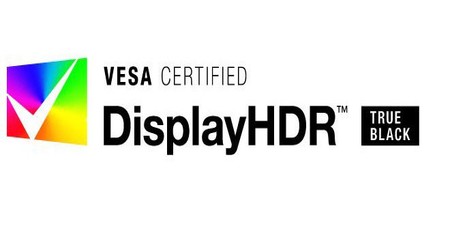VESA announces DisplayHDR True Black standard
January 4, 2019 | 11:16
Companies: #intel #samsung #video-electronic-standards-association

The Video Electronics Standards Association (VESA) has announced it is extending its DisplayHDR standard with new requirements targeting OLED and micro-LED display types: DisplayHDR True Black.
Launched back in December 2017 with a testing tool published in May 2018, VESA's DisplayHDR certification scheme aims to simplify choosing between multiple monitors or TVs with high dynamic range (HDR) support. At its simplest, a DisplayHDR certification tests eight specific parameters, including peak luminance, contrast with and without localised dimming enabled, colour gamut testing, minimum bit depths, and HDR response times, while using the peak brightness attainable by the display to put a certified device into one of three tiers: DisplayHDR 400, DisplayHDR 600, and DisplayHDR 1000, representing 400, 600, and 1,000 nits of brightness respectively.
Now, VESA has announced an extension to the DisplayHDR standard which aims at current organic LED (OLED) and future micro-LED displays - devices which, unlike traditional liquid-crystal displays (LCDs), are capable of turning the illumination off on a per-pixel basis. Dubbed DisplayHDR True Black, the new standard certifies a display as offering considerably improved black levels and rise times over the DisplayHDR 1000 tier by requiring a black level of no more than 0.0005 nits.
'When VESA unveiled the original DisplayHDR standard, we recognised that display technologies were quickly evolving, and we immediately set to work on developing a new open HDR standard for OLED and other emissive display technologies,' claims Intel's Roland Wooster, chair of the VESA task group responsible for DisplayHDR. 'On behalf of all of the VESA member companies that contributed to the DisplayHDR True Black specification, I'm pleased to say that we are fulfilling our promise with today's announcement. We're extremely proud of this incredible, high contrast and high dynamic range standard. Consumers benefit from the transparency of the DisplayHDR True Black specification and logo, which makes it clear that they're getting a display that yields huge performance improvements in subdued lighting environments.'
'Embracing the new DisplayHDR True Black standard, OLED is the ideal display technology for mixing bright highlights with deep, true blacks, so consumers can create extraordinary content or simply appreciate incredibly breathtaking imagery on their PCs,' adds the not-at-all-biased Jeremy Yun, vice president of Samsung Display's OLED marketing team. 'The new standard, when coupled with VESA's DisplayHDR logo program, will show consumers that True Black represents a highly important step in enhancing gaming, TV or movie watching, as well as viewing and editing of photos and videos. Users can see and feel a dynamic range that yields a superior high-end HDR experience.'
At the same time, VESA has also added an intermediate DisplayHDR 500 certification, for devices which exceed DisplayHDR 400 but don't quite hit the requirements of DisplayHDR 600.

MSI MPG Velox 100R Chassis Review
October 14 2021 | 15:04








Want to comment? Please log in.